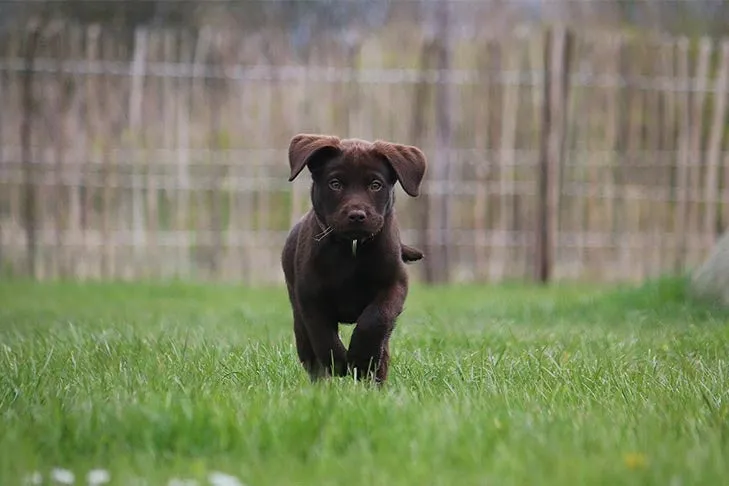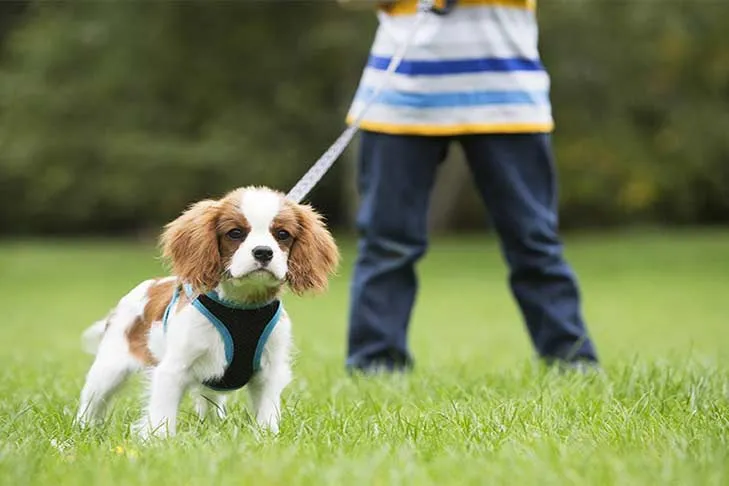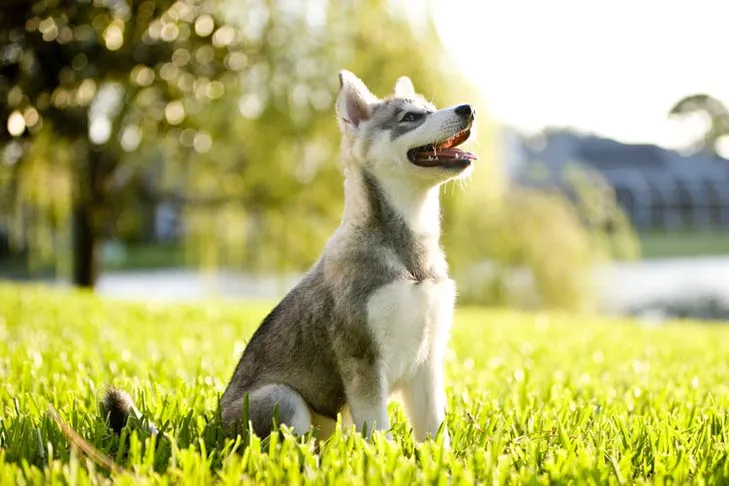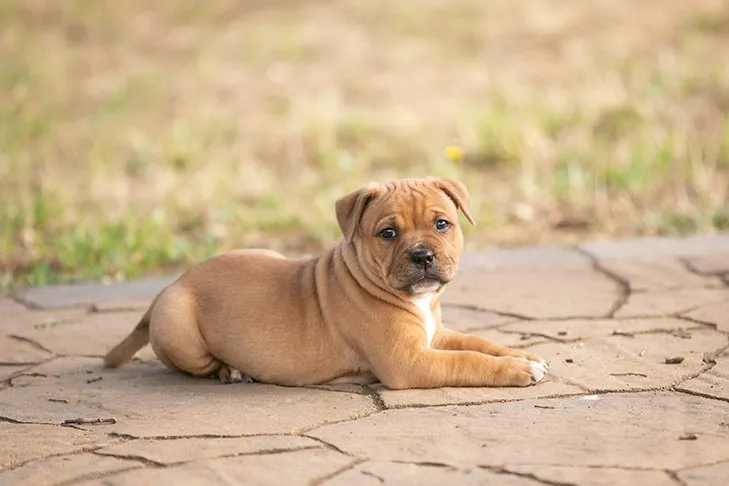Bringing a new puppy into your home is an exciting time, filled with joy, cuddles, and endless potential. Beyond the cuteness, it’s also the perfect opportunity to lay a strong foundation for a lifetime of good behavior through training. Teaching your puppy a set of Top Commands To Teach Puppy not only helps manage their energy and curiosity but also strengthens the bond between you and your furry companion. These essential commands are crucial for their safety, your peace of mind, and their ability to navigate the human world successfully.
Effective puppy training doesn’t have to be daunting. The key is to keep sessions short, positive, and consistent, always ending on a high note. If your puppy seems to be struggling, it might be a sign to re-evaluate your approach: perhaps slow down the steps or increase the value of your rewards. This guide will walk you through the “Basic 5” commands, setting your puppy up for success in all future training endeavors. Master these fundamental skills, and you’ll be well on your way to raising a well-adjusted and obedient dog. For more foundational advice, explore puppy training basics.
Getting Started: Building a Strong Training Foundation
To ensure your puppy thrives in training, it’s vital to establish clear expectations from the outset. Knowing what is expected helps puppies feel secure and confident in their ability to meet the goals you set. The most effective foundation for any puppy training program is based on positive reinforcement. This method involves rewarding your dog for desirable behaviors, thereby encouraging them to repeat those actions. It’s not about bribing your dog but about using something they value to teach them what you want them to do.
It is crucial to avoid punishment, such as yelling or leash corrections. Punishment can confuse and frighten dogs, making them unsure of what is being asked and potentially damaging your relationship. Remember, puppies are learning a new language and a whole new set of rules; we cannot expect them to know what they haven’t been taught. Patience is your greatest ally in helping your new puppy learn appropriate behavior. Reinforcement can take many forms, including small pieces of high-value food, lavish verbal praise, or the chance to play with a favorite toy. While food is often the most convenient, teaching your dog to associate praise with positive outcomes (by pairing it with treats) creates versatile reward options. Puppies can begin very simple training as soon as they come home, typically around eight weeks old. Keep training sessions brief, about five to ten minutes, and always conclude on a positive note. If your puppy struggles with a new command, switch back to something they already know, reward them handsomely, and end the session there to prevent frustration.
How to Teach a Dog to Come When Called
Teaching your dog to reliably come when called (recall) is one of the most critical commands for their safety and your peace of mind. Begin this training in a quiet, distraction-free indoor environment.
- Introduce the Cue: Sit with your puppy and gently say their name, followed by the word “come.” Each time you say the cue, immediately give your puppy a treat. At this stage, they don’t need to do anything else; the goal is to create a positive association with the word.
- Lure and Reward: Drop a treat on the floor near you. As your puppy finishes the treat, say their name again. When they look up at you, reward them with another treat.
- Increase Distance: Repeat the previous step, gradually tossing the treat a little further away. Encourage them to turn and face you when you call their name. If they don’t respond, move closer and return to a step where they were successful. Avoid repeating their name excessively, as this can teach them to ignore it.
- Add Movement and Fun: Once your puppy consistently turns to face you, make the game more exciting! Toss a treat, take a few quick steps away, and call their name. Puppies love to chase, so they should eagerly follow. When they catch up, provide enthusiastic praise, multiple treats, or a quick game with a tug toy. Coming to you must always be a highly rewarding and enjoyable experience.
- Expand and Practice: Gradually increase the distance and practice in various locations. When training outdoors, always use a safe, enclosed area, and consider using a long leash initially for control. Remember, when your puppy comes to you, avoid reaching out and grabbing them, which can be startling. Instead, kneel down, face sideways, and offer treats as you gently reach for their collar. These foundational skills are key for all basic things to teach a puppy.
 A Labrador puppy running happily in the grass near a wooden fence
A Labrador puppy running happily in the grass near a wooden fence
How to Teach a Dog Loose-Leash Walking
Loose-leash walking teaches your puppy to walk politely by your side without pulling, making walks enjoyable for both of you. While competition obedience might require a precise “heel” position, the goal for puppies is simply a relaxed, loose leash walk. Choose a consistent cue like “let’s go” or “forward.”
- Leash Comfort: First, ensure your puppy is comfortable wearing a leash and collar. Some puppies might initially try to bite the leash. Offer treats each time you put the leash on to create a positive association.
- Stationary Rewards: Stand next to your puppy with a loose leash. Give them several treats in a row for simply standing or sitting calmly by your leg.
- One Step Forward: Take one step forward. As your puppy follows to catch up, immediately reward them with another treat.
- Continuous Rewarding: Continue walking, consistently giving treats at the level of your knee or hip as they walk alongside you.
- Change Direction: If your puppy runs ahead and pulls, simply change direction without a word. When they follow and catch up, reward them in position, then continue walking. Gradually increase the time between treats, moving from every step to every other step, and so on. This will help your puppy learn easy commands to teach a puppy.
- Sniffing Time: Allow your puppy plenty of time to sniff and explore during walks. After their sniffing time, use your “Let’s go!” cue in a cheerful voice and reward them for returning to your side and walking politely.
 A Cavalier King Charles Spaniel puppy happily walking on a leash in an outdoor setting
A Cavalier King Charles Spaniel puppy happily walking on a leash in an outdoor setting
How to Teach a Dog to Sit
Teaching your puppy to “sit” is a fundamental command that provides control and can be a stepping stone for more advanced behaviors. There are two primary methods for teaching “sit”: capturing and luring.
Capturing Method
- Observe and Reward: Stand in front of your puppy with treats. Wait patiently for them to naturally sit on their own. The instant their bottom touches the ground, say “yes” (or use a clicker) and give them a treat.
- Encourage Repetition: Step backward or sideways to encourage your puppy to stand up again. Wait for them to sit naturally, then reward them immediately.
- Add the Cue: After several repetitions where your puppy is consistently offering the sit, begin saying “sit” just as they start the motion of sitting.
Luring Method
- Lure with a Treat: Get down to your puppy’s level, holding a treat in front of their nose.
- Guide the Motion: Slowly move the treat upwards and slightly over their head. As their nose follows the treat, their bottom will naturally lower into a sit.
- Reward the Sit: The moment their bottom touches the ground, allow them to eat the treat.
- Fade the Lure: Repeat this a couple of times with the food lure. Then, use an empty hand signal (the same motion you used with the treat) and continue to reward your puppy with a treat from your other hand after they sit.
- Add the Cue: Once your puppy understands the hand signal, begin saying “sit” just before you give the hand signal.
Never force your puppy into a sitting position physically, as this can be distressing and counterproductive to learning. This command is also foundational for basic commands for German Shepherd puppies.
 An Alaskan Klee Kai puppy sitting attentively in vibrant green grass
An Alaskan Klee Kai puppy sitting attentively in vibrant green grass
How to Teach a Dog to Lie Down
The “down” command is incredibly useful for calming your puppy and teaching them to relax in various situations. It can be taught using similar capturing or luring techniques as the “sit” command.
Capturing Method
- Create an Opportunity: Find a quiet, less stimulating environment, such as a small room, to encourage your dog to lie down naturally.
- Capture the Behavior: When your dog lies down, immediately reinforce the behavior with a treat and praise.
- Release and Repeat: Give a release cue (like “OK” or “free”) to encourage them to stand up, using a lure if necessary. Then, wait for them to lie down again and reward.
- Add the Cue: Once they are quickly lying down after standing, start saying “down” just as they begin the motion.
Luring Method
- From Sit or Stand: Hold a treat to your dog’s nose.
- Guide to the Floor: Slowly bring the treat down towards the floor and then away from their body. As their nose follows, their body will naturally lower into a down position.
- Initial Reward: Give the treat the moment their elbows touch the floor.
- Fade the Lure: After a few repetitions, start using your empty hand for the lure motion, giving the treat after they have fully lain down.
- Add the Cue: Once your dog reliably follows your hand signal, begin saying “down” as you move your hand.
Just like with “sit,” never use force to physically push your puppy into the down position, as this can be confusing and upsetting.
How to Teach a Dog to Stay
A puppy that understands the “stay” cue will remain in a specific position until given a release word. This is a crucial command for impulse control and safety.
- Teach the Release Word: First, choose a consistent release word like “OK” or “free.” Practice by having your puppy in a sit or stand, then toss a treat on the floor and immediately say your chosen release word as they move to get the treat. Repeat this until they associate the word with moving their feet.
- Introduce “Stay” (Short Duration): Have your puppy sit. Face them and give them a treat for sitting. Pause briefly, then give another treat for staying in the sit, and then release them with your release word.
- Gradually Increase Time: Slowly increase the time you wait between treats. You can count in your head or sing a short song to help you keep track.
- Handle Mistakes: If your dog gets up before the release cue, it means the duration was too long. Simply make it easier by returning to a shorter time, ensuring success.
- Add Distance: Once your dog can stay for several seconds, begin adding distance. Place them in a sit, say “stay,” take one step back, then step back to your puppy, give a treat, and your release word.
- Progressive Difficulty: Continue building steps, ensuring your dog remains successful. Practice both facing them and walking away with your back turned, which is a more realistic scenario. The more solidly your puppy learns this, the longer they will be able to remain in position. Remember, teaching these are the best commands to teach a puppy for good behavior.
The key to all these commands is not to expect too much too soon. Training goals are achieved incrementally. Slow down, focus on one aspect at a time, and ensure each session is short, positive, and successful. This builds confidence and makes training a fun, rewarding experience for both you and your puppy.
 A Staffordshire Bull Terrier puppy calmly lying down outdoors, gazing ahead
A Staffordshire Bull Terrier puppy calmly lying down outdoors, gazing ahead
Conclusion
Teaching your puppy these top commands to teach puppy is more than just about obedience; it’s about fostering a strong, respectful relationship and ensuring their safety and well-being. Commands like “Come,” “Loose-Leash Walking,” “Sit,” “Lie Down,” and “Stay” are the cornerstones of responsible dog ownership, providing essential tools for communication and management. By consistently employing positive reinforcement, maintaining patience, and keeping training sessions enjoyable, you’ll empower your puppy to become a confident, well-behaved companion.
Remember that every puppy learns at their own pace, and setbacks are a natural part of the journey. Celebrate small victories, adapt your methods when necessary, and always prioritize making training a positive and bonding experience. Investing this time and effort now will yield a lifetime of happy moments with your beloved canine friend.
